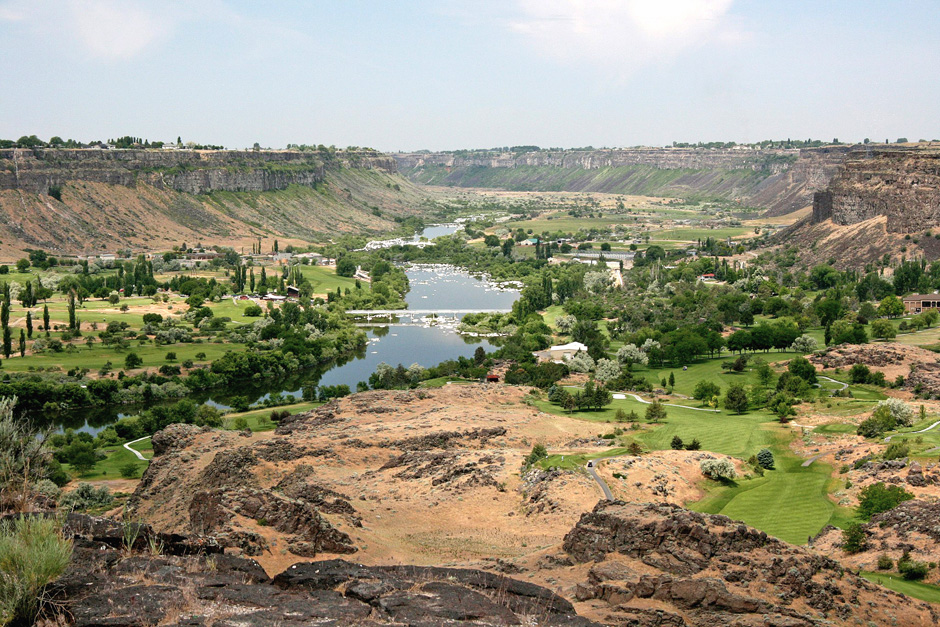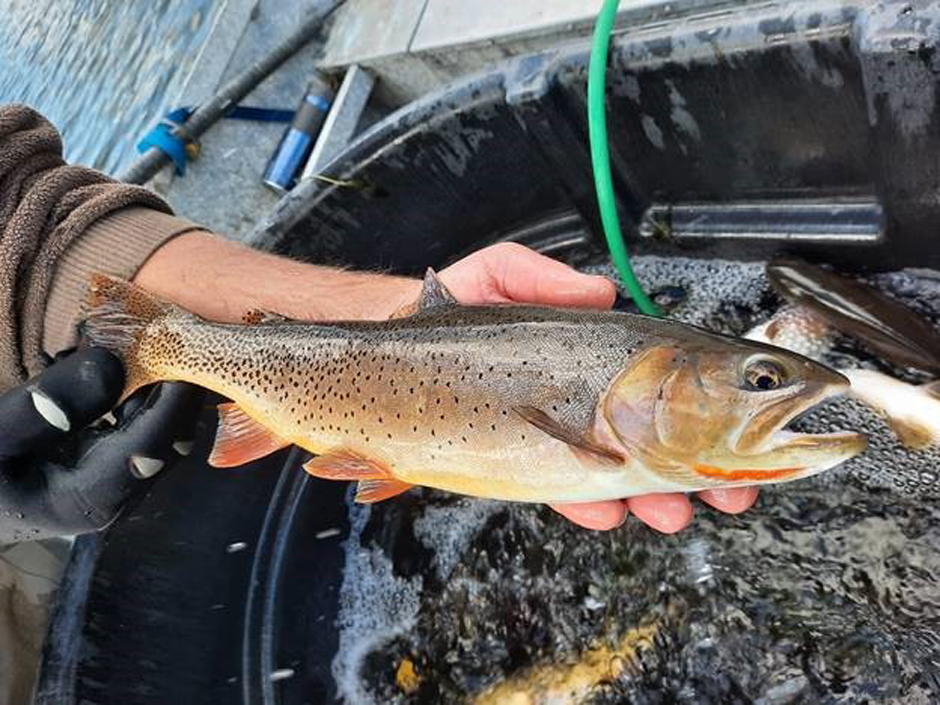Idaho’s Conservation Of Cutthroat Trout
 Snake River Canyon (Credit: Gh5046, Public domain, via Wikimedia Commons)
Snake River Canyon (Credit: Gh5046, Public domain, via Wikimedia Commons)In some parts of Idaho, anglers are scrambling to convince conservation groups to protect native cutthroat trout populations. Unfortunately, cutthroat have become more threatened by invasive rainbow trout in recent years. Cutthroat trout play an essential role in ecosystems as both prey and predator, making them a key character in the ecological chain. Current policies and management plans reflect an increased interest in including cutthroat in native biodiversity conservation efforts.
Idaho’s Fish and Game organization uses electrofishing every fall to estimate trout numbers. The state’s plan calls for a reduction of rainbow trout and an increase in cutthroat trout. The 2020 survey revealed that cutthroat populations were at a record high, but rainbows were still too high to fit the state’s management plan.
Cutthroat Trout vs Rainbow
Rainbow Trout creates a unique problem for Idaho’s management staff. Rainbows are naturally more aggressive than cutthroats and are known to eat the eggs of other fish. The controversy over management comes from local anglers’ love of the fish. Rainbow trout and other invasive species harm the ecosystem but are worthy catches for fishermen.
There are other invasive species that management teams have trouble managing, but local demand supports the preservation of rainbow, brook and brown trout, all of which are non-native salmonids. To appease local desires and the demands of the ecosystem, management has elected to only target non-native species if a decrease in population would benefit cutthroat.

(Credit: Pat Kennedy, Idaho Fish and Game; Pat Kennedy YCT Southfork, CC by 3.0)
More Water; More Cutthroat Trout
Water levels are important for trout and, due to irrigation and hydropower diversions, water levels have dropped in the Snake River and several other rivers. These diversions can make habitats less hospitable and impact natural water flow. Additionally, runoff from irrigation channels can kill native fish populations as herbicides backflow into running water.
Typically, trout will migrate throughout the year due to fluctuating dissolved oxygen levels. Furthermore, decreased water levels can throw trout migration patterns out of sorts. In response, the U.S. Bureau of Reclamation typically releases water into the Snake River to balance water use.
Future Efforts
Like other conservation efforts around the country, the team working on the Snake River engages in stocking as well. In their 2019-2024 Fishery Management Plan, Idaho has emphasized cutthroat as a species worthy of focus. The IDFG has stated that cutthroats must be considered in fisheries, land, and water management.
It is important to note that the IDFG seeks to manage the fish populations currently located in Snake River and other Nevadan waterways. The group does not wish to exterminate rainbow trout or other non-native species. Instead, the organization plans to prevent over-abundance and protect native populations simultaneously.



Michael O'Neill
July 2, 2023 at 5:04 am
I caught and released a 20” cutthroat trout at the twin ridges campground in Madison county on July 1, 2023.
Do I need to report it for conservation/observation records?
Samantha Baxter
July 7, 2023 at 8:46 pm
Hi Michael,
For all questions regarding reporting and fishing regulations, I’d recommend you refer to the state DNR or Fish and Game department presiding over whatever state you are fishing in. Per Idaho’s 2022-2024 regulations regarding cutthroat trout in the Snake River, “Trout limit is 6; only trout with a clipped adipose fin, as evidenced by a healed scar, may be kept; no harvest of Cutthroat Trout”. Therefore, it seems you do not need to report the catch and release. If the fish was tagged (there would be a plastic tag coming off of its back), you could call and report the catch to the IDFG–details for that are on page 53 of the linked pdf. If you are looking to harvest cutthroat, there are some rivers, lakes and streams where it is permissible–refer to the linked regulations to see details on size and bag limits, seasons, equipment restrictions, and locations.